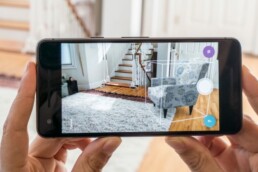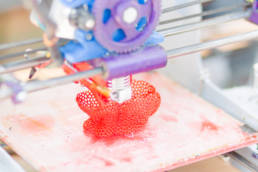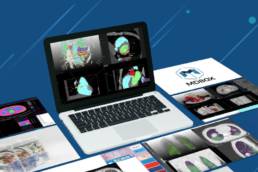It is only a matter of time before companion robots effortlessly fulfill specific human needs. How will they do this? By using 3D depth cameras. A startup in Korea called ArgosVision has created an ultra-wide 3D depth camera called ArgosVue. It offers the widest range of views that is comparable to human levels. This will be crucial for the future of human-robot interaction and the autonomous driving of intelligent robots. 3D depth cameras are what allow robots to navigate, analyze, and monitor both their environment and the humans around them.
Why are 3D Depth Cameras the Future for Robots?
There are many limitations for robots that use LiDAR sensors. LiDAR stands for light detection and ranging. A laser is used for measuring the exact distance of an object. LiDAR has many advantages with its wide horizontal field of view. However, to get a wide vertical field of view, it needs extra solutions. This is why many use both LiDAR and 3D cameras. However, this can get very expensive ($2,000-$4,000).
3D depth cameras provide a greater detailed and reliable vision system that robots can then use to analyze with a high level of accuracy. These cameras are constantly improving and getting better at both detecting and analyzing distances. In addition, they can capture accurate images regardless of environmental conditions. However, the most important factor is that 3D cameras are more affordable compared to the current 2D camera + LiDAR combination.
ArgosVue – Ultra-wide 3D Depth Camera with Human FOV

What separate’s ArgosVue from its competition is its camera sensor has both a wide horizontal and vertical field of view. For example, their vertical field of view goes to 160 degrees. Therefore, depth is an issue that is critical for robots that need to navigate steps, curbs, or obstacles that are up close. Moreover, its horizontal field of view is an impressive 270 degrees which can cover both the left and right blind spots.
 ArgosVision is focusing on human/machine interfaces through robotics. Companion robots already exist today. Mainly their function is to assist the elderly and those with disabilities. However, soon robots will provide multifunctional roles for the home and work. Thanks to the advancement in 3D cameras, the advancement in the capabilities of companion robots will also increase. 3D depth cameras allow robots to detect the orientation and recognize an object even in low light conditions. Therefore the range of vision is very important for robots to freely navigate their environment. This is why ArgosVision focused heavily on a more human-level field of view for ArgosVue. However, ArgosVue can also be applied for autonomous driving, surveillance, gaming, and other consumer applications.
ArgosVision is focusing on human/machine interfaces through robotics. Companion robots already exist today. Mainly their function is to assist the elderly and those with disabilities. However, soon robots will provide multifunctional roles for the home and work. Thanks to the advancement in 3D cameras, the advancement in the capabilities of companion robots will also increase. 3D depth cameras allow robots to detect the orientation and recognize an object even in low light conditions. Therefore the range of vision is very important for robots to freely navigate their environment. This is why ArgosVision focused heavily on a more human-level field of view for ArgosVue. However, ArgosVue can also be applied for autonomous driving, surveillance, gaming, and other consumer applications.
“We will become a leading company in robot intelligence technology with our 3D depth camera that offers a human-level wide field of view,” said Ki-Yeong Park, the CEO of ArgosVision.
Popular
Related Posts






